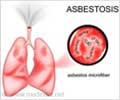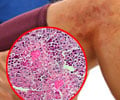Three new review articles and an Editorial on asthma will be released by The Lancet and The Lancet Respiratory Medicine.

- Editorial – Controlling asthma
- Outdoor air pollution and asthma
- Asthma genetics and personalised medicine
- Diagnosis, management, and prognosis of preschool wheeze
Traffic and power generation are the main sources of urban air pollution. The idea that outdoor air pollution can cause exacerbations of pre-existing asthma is supported by an evidence base that has been accumulating for several decades, with several studies suggesting a contribution to new-onset asthma as well. In this review, Professors Michael Guarnieri and John R Balmes, of the University of California, San Francisco, USA, discuss the effects of particulate matter (PM), gaseous pollutants (ozone, nitrogen dioxide, and sulphur dioxide), and mixed traffic-related air pollution on asthma. Reviewing evidence from the past five years, they suggest that air pollutants probably cause oxidative injury to the airways, leading to inflammation, remodelling, and increased risk of sensitisation. Although several pollutants have been linked to new-onset asthma, the strength of the evidence is variable. The authors also discuss clinical implications, policy issues, and research gaps relevant to air pollution and asthma.
The Lancet Respiratory Medicine: Asthma genetics and personalised medicine
In this review, Professor Stephen Holgate and colleagues at the Faculty of Medicine, University of Southampton, UK, and collaborators in the US, discuss genetic approaches to asthma, which have identified novel genetic targets in the pathogenesis of the disease, although so far these targets account for only a small proportion of the heritability of asthma. Recognition of the importance of disease heterogeneity, the need for improved disease phenotyping, and the fact that genes involved in the inception of asthma are likely to be different from those involved in severity, widens the scope of asthma genetics. The identification of genes implicated in several causal pathways suggests that genetic scores which capture multiple gene effects could be used to capture the individual influence of genes on the expression and treatment opportunities for this disease in individuals. Gene–environment interaction adds another layer of complexity, which is being successfully explored by epigenetic approaches that assess how the human genome is accessed. Pharmacogenetics is one example of how gene–environment interactions are already being taken into account in the identification of drug responders and non-responders, and patients most susceptible to adverse effects. Such applications represent one component of personalised medicine, an approach that places the individual at the centre of health care.
The Lancet: Diagnosis, management, and prognosis of preschool wheeze
Advertisement
Advertisement













